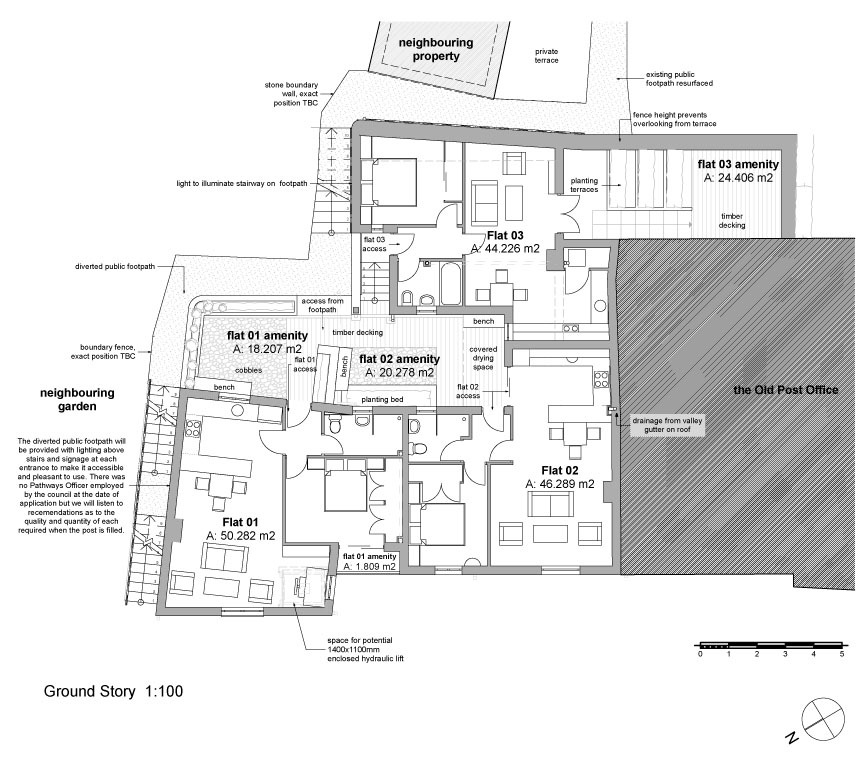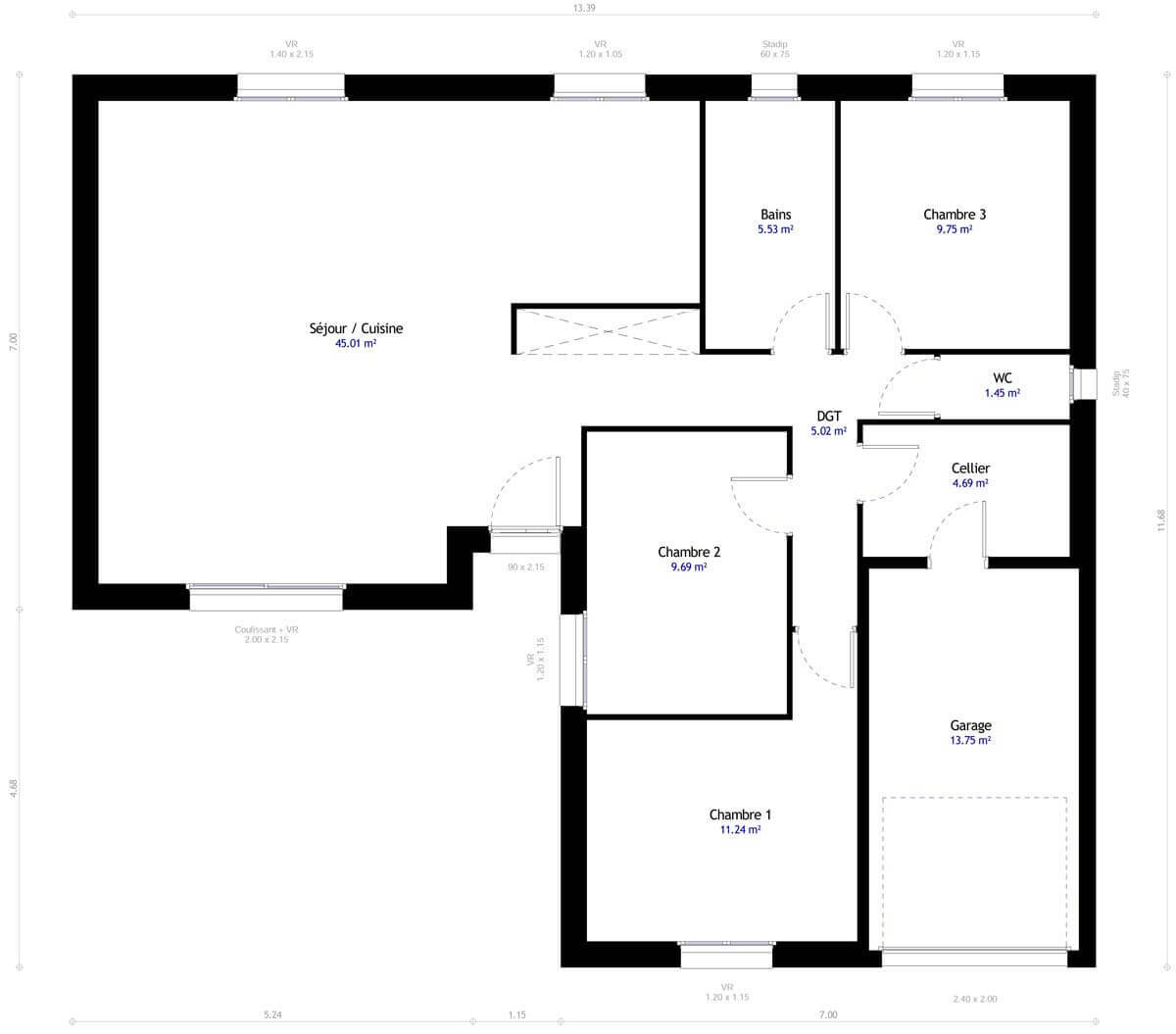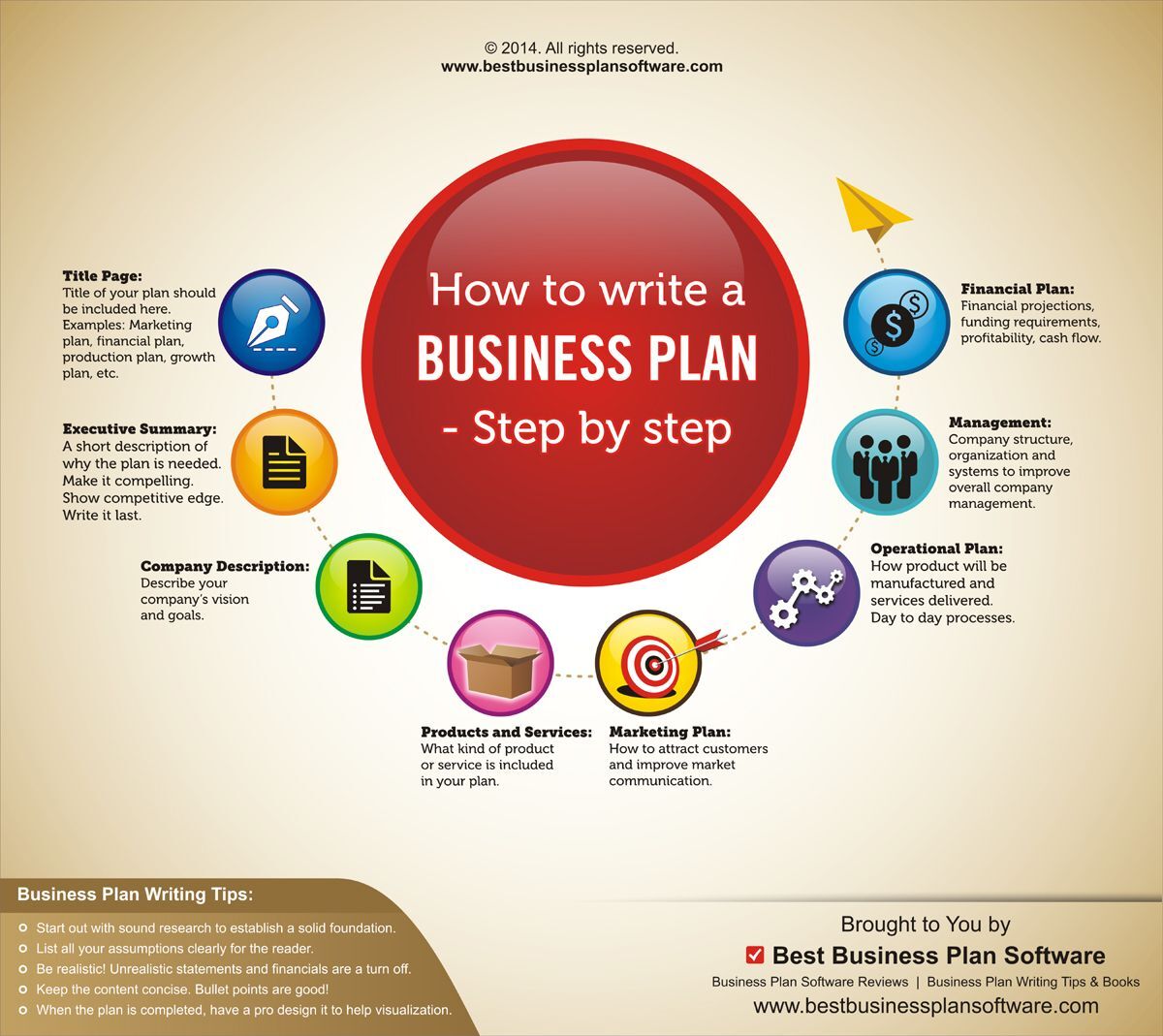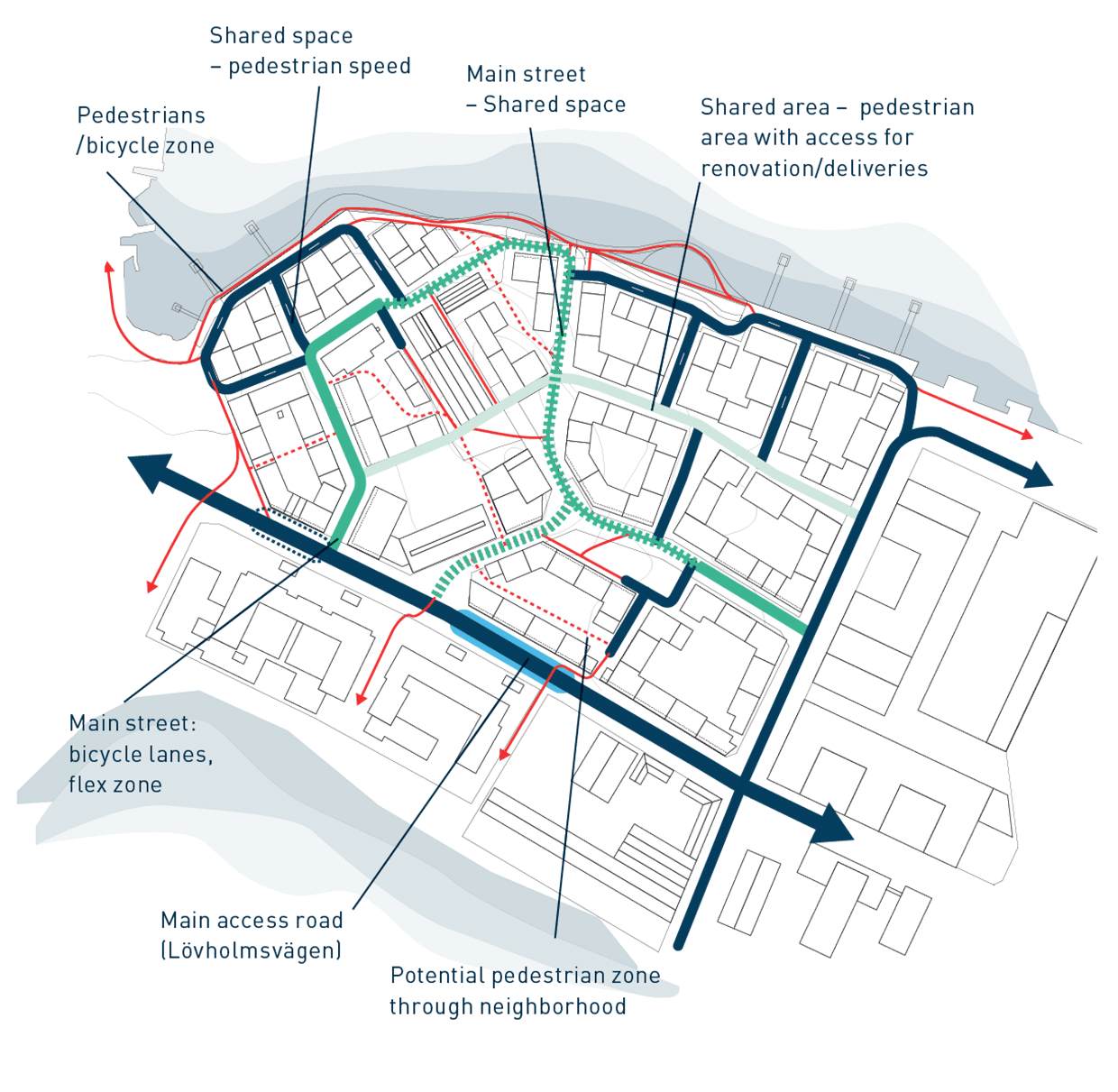Embarking on a nomadic journey can be incredibly exciting, but the initial 30 days are crucial for setting a positive tone and laying a solid foundation. This guide provides a structured approach to planning your first month as a nomad, covering everything from essential documents to practical strategies for maintaining a healthy work-life balance. It delves into the mindset required, logistical considerations, and location selection, offering insights into daily routines, community building, and adaptability to unexpected challenges.
This comprehensive guide unpacks the key elements of planning a successful first 30 days. It goes beyond the surface-level excitement and offers practical steps to navigate the practicalities, psychological aspects, and social dynamics of nomadic life. From meticulously preparing your documents to finding the right location, and building a supportive community, the guide provides a clear roadmap for a smooth transition into your nomadic adventure.
Initial Planning & Mindset
Embarking on a nomadic journey requires careful planning and a strong mindset. The first 30 days are crucial for establishing routines, managing expectations, and laying the foundation for a successful nomadic experience. A well-defined plan, coupled with a positive attitude, can significantly contribute to a smooth transition and sustained enjoyment of this unique lifestyle.The initial 30 days are not about achieving a perfect nomad life overnight, but rather about establishing a solid base for future adventures.
This period is a time for exploration, adaptation, and self-discovery within the nomadic context. Understanding that this period involves experimentation and adjustments is paramount to preventing disappointment and burnout.
Step-by-Step Planning Method
A structured approach to planning the first 30 days helps to avoid feeling overwhelmed and ensures a smooth transition. Break down the tasks into manageable steps, prioritizing essentials and allowing for flexibility. For example, allocate specific days for tasks like setting up your workspace or researching local amenities.
- Initial Assessment: Identify your immediate needs and priorities. What are your essential daily tasks (work, hobbies, social interactions)?
- Location Selection: Choose a location based on your needs and budget, considering factors such as internet access, local amenities, and cost of living.
- Accommodation Setup: Plan for your accommodation, whether it’s a co-working space, a van, or a temporary rental. Account for initial setup and any required permits or licenses.
- Financial Planning: Establish a realistic budget for the first 30 days, considering expenses like accommodation, food, transportation, and local activities.
- Practical Tasks: Develop a checklist of tasks, including setting up bank accounts, internet connections, and local transportation.
- Cultural Integration: Research local customs and etiquette to avoid misunderstandings and build positive relationships with the community.
- Emergency Preparedness: Create a plan for emergencies, including medical assistance, local authorities, and contact information.
Realistic Expectations
The first 30 days of nomadic life should be viewed as a period of adjustment, not a benchmark for perfection. It’s essential to be patient with yourself and the process. Avoid the temptation to compare your experience to others’ idealized versions of nomadic life. Instead, focus on your individual progress and celebrate small victories. A common pitfall is to overschedule, leading to burnout.
- Embrace Flexibility: Be prepared to adjust your plans as needed. Flexibility is key to a smooth nomadic experience.
- Prioritize Self-Care: Schedule time for rest, relaxation, and activities that help you recharge. This is crucial for long-term sustainability.
- Acknowledge Challenges: Be aware that unexpected difficulties might arise. Anticipate potential obstacles and develop contingency plans.
- Avoid Comparison: Focus on your personal journey, rather than comparing it to others. This fosters a more positive and sustainable experience.
Essential Documents & Pre-Departure Tasks
A comprehensive checklist of essential documents and pre-departure tasks ensures a smooth transition. This includes visa applications, health checks, and necessary financial arrangements.
- Visa Requirements: Verify visa requirements for your destination. Obtain the necessary documentation and apply for visas well in advance.
- Health and Safety: Ensure you have appropriate travel insurance, vaccinations, and any necessary medications.
- Financial Arrangements: Establish international banking options and ensure sufficient funds for the initial period.
- Communication Setup: Arrange for reliable internet access and international phone plans.
- Important Documents: Pack copies of essential documents (passport, visa, driver’s license) in a separate location from the originals.
Positive Affirmations and Visualizations
Positive affirmations and visualizations can foster a positive mindset and set the stage for a successful nomadic journey. They can help to overcome doubts and anxieties, and inspire confidence.
- Example Affirmations: “I am adaptable and resourceful.” “I embrace the challenges and opportunities that come with this journey.” “I am capable of achieving my goals as a nomad.”
- Visualization Techniques: Imagine yourself thriving in your new environment, enjoying the freedom and independence of nomadic life. Visualize successful outcomes and positive experiences.
Comparison of Nomadic Lifestyles
Different nomadic lifestyles (digital nomad, van life, etc.) have distinct initial 30-day requirements. Understanding these differences allows for more effective planning.
| Nomadic Lifestyle | Initial 30-Day Requirements |
|---|---|
| Digital Nomad | Prioritize reliable internet access, secure workspace, and flexible work arrangements. Initial days focus on establishing remote work routines and exploring local co-working spaces. |
| Van Life | Focus on vehicle maintenance, setting up a comfortable living space within the van, and exploring suitable campsites. Initial days involve finding safe parking, connecting with local communities, and learning about van life essentials. |
| Traditional Nomad | Requires thorough research of local markets, establishing initial trade connections, and understanding local resources. Initial days are focused on resource gathering, establishing community connections, and learning essential survival skills. |
Logistics & Essentials
Embarking on a nomadic journey requires meticulous planning, especially during the initial 30 days. This phase focuses on practical aspects like securing travel documents, gathering essential supplies, and establishing a basic budget and living setup. Effective organization during this period lays a strong foundation for a smoother and more enjoyable nomadic experience.
Travel Documentation & Permits
Thorough preparation of travel documents and necessary permits is paramount for a seamless trip. Visa requirements vary significantly by destination, necessitating careful research and timely application. Obtaining the appropriate visa is crucial to avoid any legal complications and ensure a legally compliant stay. Travel insurance is also essential, providing financial protection against unforeseen circumstances like medical emergencies or lost belongings.
Ensure the insurance policy covers activities pertinent to your nomadic lifestyle, such as travel and accommodation. Research and understand the specific terms and conditions of your chosen insurance policy.
Essential Items
A well-organized packing list is vital for a smooth transition into nomadic life. Essential items are categorized below to facilitate a structured approach.
- Electronics: A portable charger, international adapter, laptop, and a reliable mobile phone with a sufficient data plan are crucial. A portable Wi-Fi hotspot is an excellent alternative for those in areas with limited or expensive internet access.
- Personal Care: Pack toiletries, medications, and personal hygiene items. Consider purchasing reusable containers to reduce waste. Prioritize essentials and avoid overpacking.
- Travel: Comfortable clothing suitable for the destination’s climate, a sturdy backpack, and any necessary travel documents should be packed. A first-aid kit with essential medicines is also recommended.
- Kitchen & Dining: A compact cooking stove, utensils, and cookware are necessary for preparing meals. Reusable water bottles are essential for hydration and sustainability.
Sample Budget
A realistic budget is critical for managing expenses during the initial 30 days. This budget provides a framework for estimating costs. It’s crucial to adapt this template to your specific needs and the location.
| Category | Estimated Cost (per day) |
|---|---|
| Accommodation | $25 – $100 |
| Food | $20 – $50 |
| Transportation | $5 – $20 |
| Activities | $10 – $30 |
| Contingency | $10 |
| Total | $70 – $210 |
Accommodation Options
Choosing the right accommodation is crucial for a comfortable nomadic experience. Different options cater to varying needs and budgets.
- Hostels: A budget-friendly option, hostels often provide social opportunities and a chance to meet fellow travelers. They are ideal for short-term stays and solo nomads seeking a vibrant environment.
- Airbnb: Offers more privacy and flexibility, especially for longer stays. They can be more expensive than hostels but provide a more home-like environment.
- Co-working Spaces: Ideal for digital nomads, co-working spaces provide a professional environment for work and networking opportunities. They often offer amenities like high-speed internet and meeting rooms. Their pricing is generally higher than hostels or Airbnb.
Wi-Fi & Data Plans
Establishing a reliable Wi-Fi connection or data plan is crucial for digital nomads. Several options exist for establishing internet access.
- Public Wi-Fi: Many cafes and co-working spaces offer free or paid Wi-Fi. However, reliability and speed can vary.
- Portable Wi-Fi Hotspot: Provides a reliable internet connection wherever you go. Consider data usage and costs carefully.
- Prepaid SIM Card: A prepaid SIM card is a cost-effective solution, offering flexibility and control over data usage. Local SIM cards are often preferable for optimal network coverage and lower costs.
Location & Exploration

Embarking on a 30-day nomadic journey necessitates careful consideration of your chosen location. This phase involves identifying suitable destinations, securing affordable and safe accommodation, and planning enriching explorations within your timeframe. A well-researched approach will maximize your experience and minimize potential challenges.
Potential Locations for a 30-Day Nomadic Trip
Three locations, each with distinct appeal, provide excellent starting points for a 30-day nomadic adventure: a vibrant city in Southeast Asia, a charming coastal town in Central America, and a budget-friendly European city. These locations cater to diverse interests and offer varying levels of cultural immersion and exploration.
- Southeast Asian City (e.g., Chiang Mai, Thailand): Known for its rich culture, affordable cost of living, and abundance of activities. Expect a mix of bustling markets, historical temples, and opportunities for nature escapes. The vibrant atmosphere offers a great introduction to Asian culture.
- Coastal Town in Central America (e.g., San Juan del Sur, Nicaragua): This destination provides a relaxed atmosphere, beautiful beaches, and access to nearby national parks. The lower cost of living makes it an attractive option for budget-conscious nomads, along with the possibility of surfing or water activities.
- Budget-Friendly European City (e.g., Krakow, Poland): A historical city with a rich cultural heritage and a relatively low cost of living compared to other European capitals. Expect a blend of ancient architecture, museums, and a lively social scene, all within reach of a moderate budget.
Finding Affordable and Safe Accommodation
Securing accommodation is crucial for a seamless nomadic experience. Prioritize locations with a good reputation for safety, and utilize online platforms and local recommendations to find suitable options.
- Hostels: A cost-effective choice, particularly for solo travelers. They often offer social opportunities and a chance to connect with fellow travelers.
- Airbnb: Provides a range of accommodation options, from private rooms to entire apartments. Consider carefully comparing prices and reviews.
- Couchsurfing: An excellent option for social interaction and cultural immersion. It involves staying with locals, fostering genuine connections, and often learning about local customs.
Budget-Friendly Exploration Strategies
Maximizing your exploration within a 30-day timeframe requires careful planning. Prioritize free activities and explore local events.
- Free Walking Tours: An excellent way to learn about a city’s history and culture without spending a dime. Many cities offer these tours daily, often providing a valuable introduction.
- Local Markets: Explore local markets for authentic experiences, unique souvenirs, and delicious food at affordable prices. Engage with vendors, discover local specialties, and savor the vibrant atmosphere.
- Parks and Nature Reserves: Numerous parks and reserves offer free entry or nominal fees. These spaces provide opportunities for relaxation, photography, and connecting with nature.
Researching Local Regulations and Customs
Before embarking on your nomadic journey, research local regulations and customs. This proactive approach minimizes potential issues and ensures a smooth experience.
- Visa Requirements: Verify the visa requirements for your chosen location. Some destinations may require specific documents or applications, which should be completed well in advance.
- Local Laws and Customs: Familiarize yourself with local laws and customs. Respect local traditions and etiquette, and avoid actions that might be considered offensive or inappropriate.
- Currency Exchange Rates: Understand the local currency exchange rates and the best practices for managing your finances.
Pros and Cons of Potential Locations
This table provides a comparative overview of the potential locations, highlighting their advantages and disadvantages.
| Location | Pros | Cons |
|---|---|---|
| Southeast Asian City | Affordable cost of living, rich culture, diverse activities | Potentially crowded, different cultural norms |
| Coastal Town in Central America | Relaxed atmosphere, beautiful beaches, budget-friendly | Limited nightlife options, potentially less cultural diversity |
| Budget-Friendly European City | Historical sites, museums, rich history, lively atmosphere | Potentially higher cost than Southeast Asia, potentially more complex transportation |
Daily Routine & Productivity

Embarking on a nomadic journey requires a well-structured daily routine to maintain productivity and avoid feeling overwhelmed. Establishing a consistent schedule helps you manage your work, exploration, relaxation, and social interactions effectively, fostering a healthy work-life balance. A strong routine during the initial 30 days sets the stage for long-term nomadic success.
Sample Daily Schedule (First 30 Days)
A structured schedule, while adaptable, provides a framework for your first 30 days. This sample schedule balances work, exploration, and personal time.
| Time | Activity | Description |
|---|---|---|
| 7:00 AM – 8:00 AM | Wake Up & Preparation | Wake up, prepare healthy breakfast, review schedule for the day. |
| 8:00 AM – 12:00 PM | Work | Focus on work tasks, set daily goals, and utilize time management techniques. |
| 12:00 PM – 1:00 PM | Lunch & Commute | Enjoy lunch, potentially incorporating a quick commute or travel time. |
| 1:00 PM – 4:00 PM | Exploration/Learning | Explore the local area, visit landmarks, museums, or attend workshops related to your interests. |
| 4:00 PM – 5:00 PM | Social Interaction | Connect with locals, attend events, or meet up with fellow nomads for networking. |
| 5:00 PM – 7:00 PM | Relaxation/Personal Care | Engage in relaxation activities like yoga, reading, or meditation. Prioritize personal care and well-being. |
| 7:00 PM – 9:00 PM | Dinner & Planning | Enjoy dinner, review progress, and plan activities for the following day. |
| 9:00 PM – 10:00 PM | Wind Down | Prepare for sleep, engage in calming activities, and reflect on the day’s events. |
Importance of Establishing a Productive Routine
A consistent daily routine during the initial 30 days helps maintain focus and prevents overwhelm. It fosters discipline, promotes better time management, and allows for the integration of work and leisure activities. This structured approach minimizes stress and maximizes productivity.
Maintaining Work-Life Balance
Establishing clear boundaries between work and personal time is crucial. Designate specific times for work and leisure. This structure allows for effective task completion while maintaining a sense of well-being. Regular breaks, healthy meals, and sufficient sleep contribute significantly to a healthy work-life balance. Prioritizing self-care and mindful activities are also essential.
Overcoming Potential Challenges
Homesickness and isolation are common challenges during the initial phase of nomadic life. Regular communication with loved ones through phone calls, video chats, or social media helps combat feelings of isolation. Engaging in local activities, joining online communities, and proactively seeking out social interactions help overcome these challenges.
Sample Itinerary (First 30 Days)
This itinerary provides a structured framework for the first 30 days, encompassing work, exploration, and personal time. It is designed to be flexible and adaptable to the individual’s needs and preferences.
- Day 1-3: Settling in, familiarizing with the surroundings, exploring the local area, and establishing initial routines.
- Day 4-7: Focused work periods, incorporating research, networking, and meeting with local contacts.
- Day 8-14: Exploring local attractions, attending workshops, and meeting new people. This period aims to balance work with exploration and social activities.
- Day 15-21: Continued work alongside deeper exploration of the local culture, including attending events, and participating in local activities.
- Day 22-30: Reviewing progress, fine-tuning routines, and planning for the next phase of nomadic life, possibly focusing on a new destination.
Building a Community & Support

Connecting with other nomads is crucial for a smooth and enriching experience. A supportive community can provide invaluable guidance, practical advice, and emotional support during the initial stages of your nomadic journey. This network can help you navigate challenges, discover hidden gems, and make the most of your time on the road.Building a supportive network is a key aspect of a successful nomadic lifestyle.
Sharing experiences, learning from others’ mistakes, and receiving encouragement can make a significant difference in your well-being and your ability to thrive in this unique way of life. This section will explore strategies for forging connections and maintaining a positive mindset while you establish your nomadic community.
Finding Local Communities
Connecting with other nomads in your local area is an excellent way to discover hidden gems and build relationships. Local meetups and gatherings can offer insights into the local culture, cuisine, and attractions, helping you tailor your experience to your interests. These connections can also lead to unexpected opportunities for collaboration, such as shared accommodation or local recommendations.
Utilizing Online Forums and Communities
Online forums and communities dedicated to nomads offer a wealth of resources and support. These platforms allow you to connect with individuals from various backgrounds and experiences, fostering a diverse and enriching network. They provide a valuable space for sharing information, asking questions, and seeking advice, which can be particularly beneficial in the early stages of your journey.
Maintaining a Positive Mindset
Maintaining a positive and supportive mindset is vital for success as a nomad. Surrounding yourself with positivity and encouragement is essential for maintaining motivation and resilience. Embrace the challenges as opportunities for growth and learning, and celebrate your achievements, no matter how small. A strong support system is crucial in maintaining this positive outlook.
Examples of Virtual and In-Person Meetups
Numerous virtual and in-person meetups cater specifically to nomads. Examples of virtual meetups include online forums, social media groups, and dedicated online communities. In-person meetups often include events such as workshops, networking sessions, and social gatherings. These can be arranged through local nomad groups or travel communities.
Comparison of Online and In-Person Support Groups
| Support Group Type | Pros | Cons |
|---|---|---|
| Online Forums/Groups |
|
|
| In-Person Meetups |
|
|
Adaptability & Problem Solving
Embarking on a nomadic journey demands a high degree of adaptability and problem-solving skills. Unexpected challenges are inevitable, and the ability to navigate them swiftly and effectively is crucial for a smooth and enjoyable experience during the initial 30 days. This section focuses on strategies for adapting to these challenges, developing crucial problem-solving skills, and mitigating potential financial setbacks.Effective problem-solving is not just about finding solutions; it’s about proactively anticipating potential issues and developing a flexible mindset.
A strong foundation in adaptability ensures a smoother transition into nomadic life, allowing you to focus on exploration and enjoyment instead of constant worry.
Strategies for Adapting to Unexpected Challenges
Proactive planning and a flexible approach are essential for navigating unforeseen circumstances. Anticipating potential problems and developing contingency plans can significantly reduce stress and anxiety during the first 30 days. This includes preparing for technical difficulties, such as internet outages or device malfunctions, and developing backup plans for communication and access to essential services.
- Technical Issues: Having a backup internet connection, such as a mobile hotspot or portable Wi-Fi device, is crucial. Knowing how to troubleshoot common technical problems with your devices and understanding alternative communication methods (e.g., using a satellite phone or messaging apps) is also important.
- Unforeseen Circumstances: Develop a flexible itinerary that allows for adjustments. Have a local contact or a friend who can assist you with practical issues. Always have a plan B, C, or even D, particularly for travel plans or lodging.
- Communication Breakdown: If you have a reliance on digital communication, make sure you have a backup plan for contact with loved ones or for accessing emergency services.
Developing Problem-Solving Skills
Cultivating problem-solving skills is a continuous process, not just a one-time task. A crucial aspect of nomadic life is the ability to think creatively and resourcefully when facing unexpected situations.
- Resourcefulness: Learning to find solutions with limited resources is an essential skill for nomads. This includes being able to find alternative transportation, food sources, or accommodation when faced with unexpected delays or difficulties. Learning how to utilize free or affordable resources can significantly reduce financial stress.
- Seeking Help: Don’t hesitate to ask for help from locals or fellow nomads. Often, the best solutions come from those who have firsthand experience in the area.
- Flexibility: Be prepared to adjust your plans and priorities as needed. Flexibility is key to adapting to unexpected situations and making the most of your nomadic experience.
Managing Potential Financial Setbacks
Financial planning is crucial for navigating the potential challenges of unexpected costs. A solid budget and financial cushion are vital for managing any unexpected expenses.
- Contingency Fund: Establishing a dedicated contingency fund to cover unexpected expenses, such as medical bills or repairs, is essential.
- Budgeting: Maintain a detailed budget to track expenses and ensure you stay within your financial limits. Be aware of potential hidden costs and factor them into your budget.
- Alternative Income Streams: Explore alternative income streams, such as freelance work or online services, to help manage unexpected costs or maintain financial stability.
Building Resilience and Coping with Challenges
Resilience is the ability to adapt to and overcome challenges. It is a vital component of a successful nomadic journey.
- Positive Mindset: Maintain a positive and proactive attitude. View challenges as opportunities for growth and learning.
- Self-Care: Prioritize self-care activities, such as exercise, mindfulness, and healthy eating, to maintain physical and mental well-being. This will help you cope with stress and maintain a positive outlook.
- Learning from Experiences: Each challenge provides an opportunity to learn and adapt. Reflect on your experiences and identify areas where you can improve your resilience.
Illustrative Stories of Nomads
Numerous nomads have successfully navigated unexpected challenges in the first 30 days of their journeys. These experiences demonstrate the importance of adaptability and problem-solving.
- Example 1: A nomad experienced a significant delay in their flight, forcing them to adjust their accommodation plans. They contacted a local hostel and found an alternative solution within a short period.
- Example 2: A nomad encountered unexpected internet issues while working remotely. They proactively contacted a local internet provider and found a suitable solution within a day. This allowed them to continue their work without disruption.
Final Summary

Successfully navigating the first 30 days as a nomad sets the stage for a fulfilling and sustainable nomadic lifestyle. By meticulously planning your initial steps, including your mindset, logistics, location, daily routine, community building, and adaptability, you establish a strong foundation for long-term success. This comprehensive guide equips you with the tools and strategies needed to embrace the nomadic lifestyle with confidence and enthusiasm.